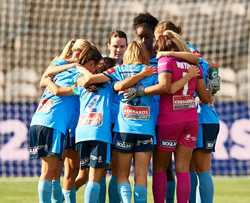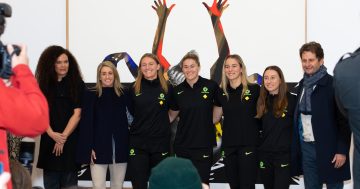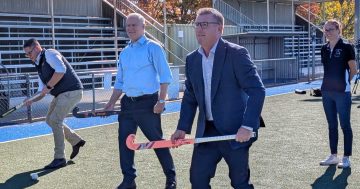Brianna Boecker* says an emphasis on ‘fun’ could be the clincher in community sport clubs attracting more women.
 Research looking into community sport has found that levels of enjoyment or ‘fun’ experienced by women and girls largely influences their decision to continue participating in their sport.
Research looking into community sport has found that levels of enjoyment or ‘fun’ experienced by women and girls largely influences their decision to continue participating in their sport.
The report’s findings also point to what community sport clubs can do to improve their retention of women and girls.
The Victoria University research team tracked more than 5,000 females who participated either in community club gymnastics or football (soccer) around Australia from 2019 to 2021.
Around half the study’s survey respondents had stopped participating in sport, and the other half were still involved with their sport.
The study used the sports of gymnastics and football to capture participant views in both a traditionally female sport, and a traditionally male one, but the findings can be applied to any sport.
The main reason women and girls reported stopping their sport?
The research found that for nearly two thirds of those who’d left their sport, their reason for doing so was that they weren’t having fun.
And this was especially true for teenagers.
Other major reasons included losing interest, having an unfriendly coach or official, injuries or feeling too old.
At a time when community sport clubs are scrambling to attract members and retain them, Researcher Professor Rochelle Eime says that these findings can help point clubs in the right direction to addressing retention issues.
“Clubs need to ensure that what they offer aligns to the reasons girls and women get involved in the first place,” she said.
“Clubs can focus too much on pennants and medals, yet the research shows players mainly want to have fun, especially at the crucial adolescent stage when we lose so many young women and girls.”
By looking at particular age groups in the study, further information can be found.
For younger girls aged under 12 years old, the main factor affected their decision wo dropout was cost.
Professor Eime notes this decision based on cost would likely be made by parents.
For women aged over 18-years old, the main reason for dropping out was challenges caused by COVID-19.
Nevertheless, both age groups– similar to the teenager group– reported “not having fun” as a major reason to drop out of their sport.
Why aren’t clubs making sport ‘fun’ enough?
One reason why clubs might not foster a sport culture around “fun” is that the types of volunteers who tend to get involved in these community groups can tend to focus too much on winning and competition.
“Volunteer groups are often dominated by people who are either very good at the sport, or have children who are,” Professor Eime said.
“They want their child to be the next player for the Matildas and forget about others.”
Another reason that women and girls might not be as drawn to community sport clubs is a lack of flexibility.
Professor Eime points to the strict, timetabled structure of many clubs as an issue that hasn’t been addressed in generations.
She says women and girls have less organised alternatives for fun and fitness such as taking a pilates class or taking dance lessons.
These types of activities tend to have more flexibility around when and how often participation is required.
Professor Eime adds that there’s a wider choice in skill levels as well, compared to sport clubs.
While the list of issues facing community sports clubs seems long, Professor Eime sees easy fixes.
She’s also positive in regards to the effects that COVID had on sport culture and says that “COVID’s devastating impact on community sport memberships in recent years provided real opportunities for a major overhaul of the ways clubs attracted and kept members.”
How can clubs improve?
Within the report, researchers found a variety of ways for community sport clubs to improve their membership retention of women and girls.
One way is to develop strategies and programs that focus on fun and enjoyment in the sport.
Another is to ensure training and competitions allow all players to improve their skills— not just elite members.
And finally, clubs can assist with players’ costs by repurposing equipment or uniforms, or offering discounts to volunteers.
*Brianna Boecker is an Associate Publisher with Women’s Agenda.
This article first appeared at womensagenda.com.au.











